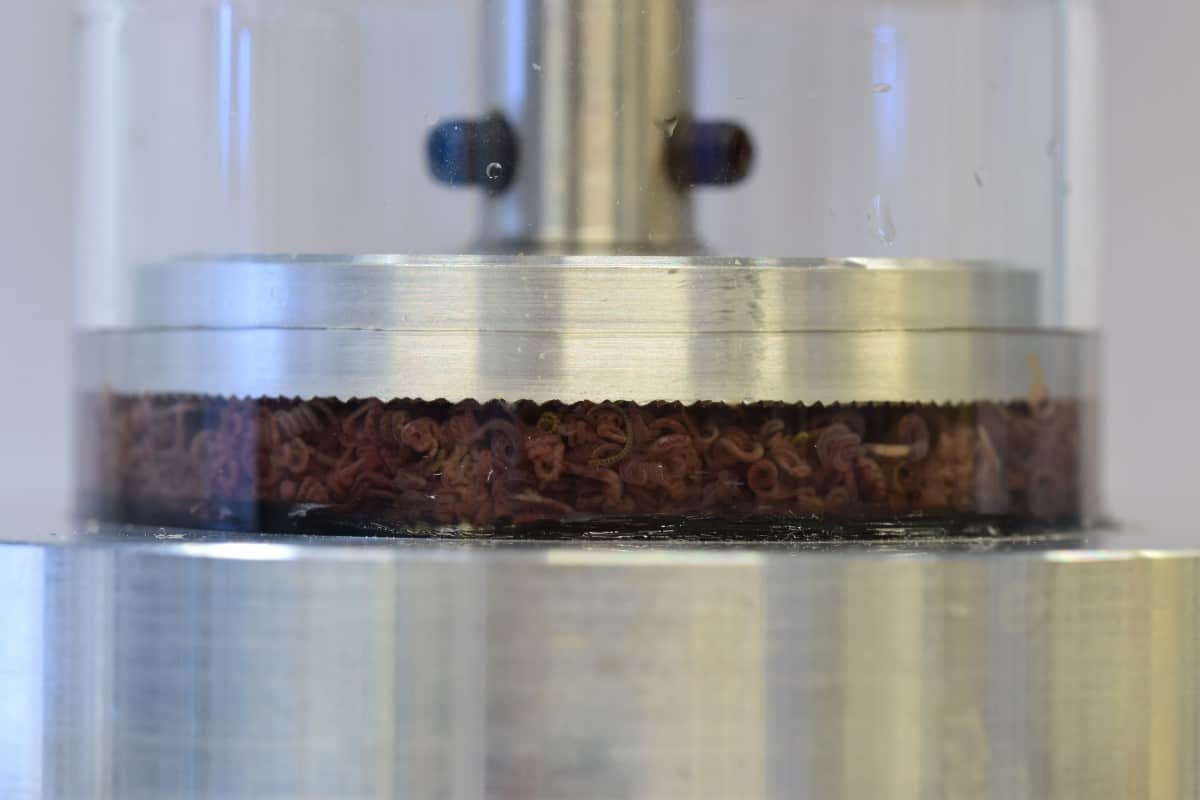
Tipsy sludge worms simulate active polymers
by Hamish JohnstonClumps of wriggling – and sometimes drunken – sludge worms have been used by physicists in the Netherlands to simulate the behaviour of self-moving polymers. Antoine Deblais and colleagues at the University of Amsterdam used the creatures to gain new insights into the properties of poorly understood “active polymer” materials by measuring the viscosity of worm clusters as they were subjected to shear forces.
Polymers such as silk and polyester are some of the most familiar and most studied materials. However, scientists know much less about active polymers, which use stored energy or energy in the surrounding environment to move and change shape. When active polymers interact with each other and the fluid surrounding them, new structures and dynamics can emerge – something that could be useful for developing new technologies. However, studying this in the lab or using computer simulations is extremely challenging.
Now, Deblais’ team has used tangled clusters of living sludge worms as an analogue system for studying active polymers. These long, slender animals closely mimic the behaviours of active polymer molecules, and are also widely available in many pet shops, making them ideal for simple, inexpensive experiments. Furthermore, their activity can be varied by placing them in water at different temperatures, and they can even be temporarily incapacitated when exposed to alcohol – allowing them to resemble inactive polymers more closely.
Disentangling freely
In their experiment, Deblais and colleagues studied the physical properties of the worms by putting them in a shallow cylindrical container of water. They then pressed a rotating plate onto the surface of the mixture, subjecting it to a shear force. In a typical polymer, tangling between molecules would resist these forces, increasing the viscosity of the mixture. In contrast, the movements of the worms caused any coils to disentangle more freely. This meant the warmer mixtures, which contained the most active worms, were up to 100 times less viscous than those containing inactive, alcohol-infused specimens.
The team also looked at an effect called“shear thinning”, which occurs when higher shear forces force the polymer strands to align themselves, thereby lowering the viscosity. In contrast, Deblais’ team found that mixtures containing more active worms displayed less shear thinning than their inactive counterparts when the plate was spun at several rotations per second. They believe that this occurs as the bending, stretching, and contracting motions of the wriggling worms works against the alignment process.
Deblais and colleagues now hope that their research will pave the way for a new experimental research field they call “polymer-like worms”, which could lead to much better models of similar systems on microscopic scales. Their research could also lead to sophisticated new techniques for modelling a variety of microscopic biological systems.
The research is described in Physical Review Letters.